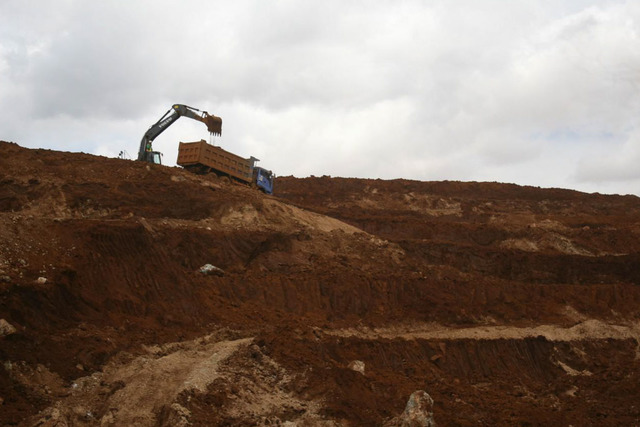
MANILA, Philippines – The Philippine Nickel Industry Association (PNIA) is eyeing a roadmap that would boost the production of minerals, amid the ongoing policy changes affecting the mining industry.
With the support of House Speaker Gloria Macapagal Arroyo, PNIA president Dante Bravo said part of this plan is to have more mineral processing plants in the country.
“If we have the right policies, we can guarantee investments, we can guarantee supply, then we can provide competitive advantage,” he said in a press briefing on Tuesday, March 19.
“[And] definitely, as the second largest producer of nickel, we can also become the second, or the No. 1, in value-added processing.” (READ: How can mining work for Philippines?)
Despite the administration’s apparent dislike for the mining industry, Arroyo stresses that mining is still legal under the law. However, Arroyo said that whatever is mined should also be processed within the country. | @rapplerdotcom
— Anna Mogato (@AGAMogato) March 19, 2019
Indonesia is currently the Philippines’ strongest competitor, being the top source for nickel.
With the Philippine government still wrestling with its own policies, Bravo said the nickel industry must target value-added production. (READ: Duterte to ‘confront’ Congress on need to ‘close mining industry’)
“In the short term we are still so focused on ensuring that all mining companies in the Philippines are compliant – that in fact, they are practicing sustainable initiatives,” he added.
However, this would have to depend on government support and the environment where processing plants would have to be built in.
“[I]f you put up a value-added processing plant, it’s capital-intensive and it’s long term. You have to guarantee that there is sufficient reserve to support the plant and that requires exploration…for a number of years,” Bravo said.
Aside from this, there should also be enough buffer stock near the area for the processing plant to use.
“If you’re only limited to one area, say, [what] if you’re going to expand in the future your capacity, then where will you source it? It has to be open and you have to identify it in the beginning,” he added.
The PNIA recently partnered with the International Nickel Study Group (INSG), Electric Vehicles Association of the Philippines, European Chamber of Commerce, and CRU Consulting Group to pick apart the opportunities and challenges of the industry.
The University of the Philippines Diliman’s Department of Mining, Metallurgical, and Materials Engineering was also included in the partnership.
Bravo said they may finish the drafting of the roadmap within the year. Regulatory policies, however, are out of their control.
“We will keep trying with the right information, with the right intention, of course, with the right parties discussing that,” he said.
Aside from the healthy demand for stainless steel, Bravo last year already projected to see a boost in demand due to the rise of e-vehicles.
Earlier, he also noted that the industry still sees a growing market not just in China, Japan, and South Korea, but also in India.
LOOK: Nickel Industry projections in 2019, according to International Nickel Study Group, a Lisbon-based organization. | @rapplerdotcom pic.twitter.com/JXibo5r06M
— Anna Mogato (@AGAMogato) March 19, 2019
While INSG reported that global performance will be strong this year, the outlook for the Philippines’ nickel production may not be so sure.
“[W]e’re still implementing the limitation on the progressive mining, [so] I think it may lower the production because if you have a limited area to operate, you may lose, basically, the flexibility, but let’s see,” Bravo said.
In 2018, the Department of Environment and Natural Resources ordered a progressive mining scheme. This limits the area a mining company can cover and orders it to rehabilitate the area before moving on to the next area to mine.
According to Bravo, this may result in a 10% to 20% reduction in nickel production. – Rappler.com
